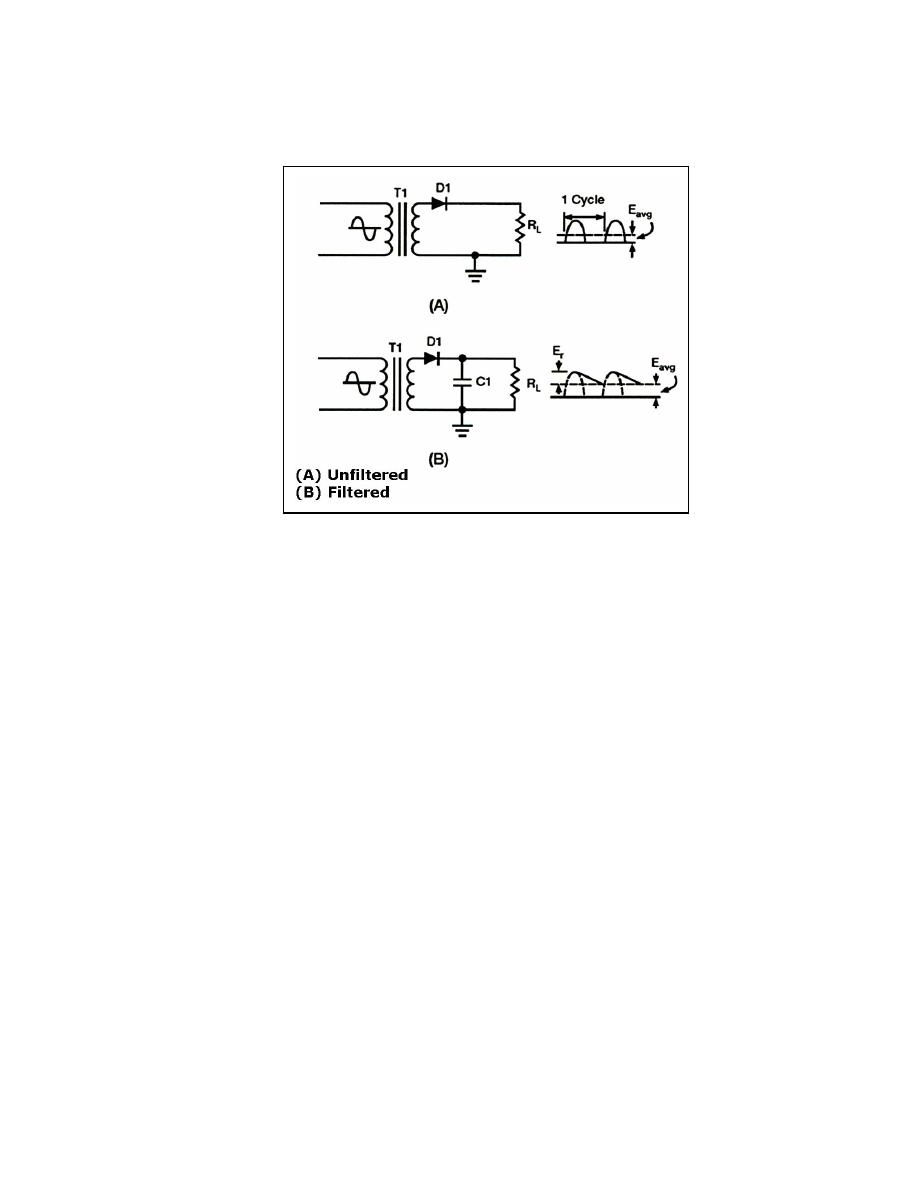
______________________________________________________________ Solid State Power Supplies
capacitor cannot discharge immediately). The capacitor slowly discharges through the load
Figure 4-16. Half-wave Rectifier With and Without Filtering
4-42. The rate of discharge of the capacitor is determined by the value of capacitance
and the value of the 1oad resistance. If the capacitance and load-resistance values are large,
the RC charge time for the circuit is relatively long.
4-43. Let us consider a complete cycle of operation using a half-wave rectifier, a
capacitive filter (C1), and a load resistor (RL). The capacitive filter (C1), shown in Figure
4-17, view (A), is assumed to be large enough to ensure a small reactance to the pulsating
C1 at the input frequency. When the circuit is energized, the diode conducts on the positive
half cycle and current flows through the circuit, allowing C1 to charge. C1 will charge to
approximately the peak value of the input voltage (the charge is less than the peak value
because of the voltage drop across the diode (D1)). Figure 4-17, view (A) shows that the
heavy solid line on the waveform indicates that the charge is C1. View (B) shows that the
diode cannot conduct on the negative half cycle because the anode of Dl is negative in
respect to the cathode. During this interval, C1 discharges through the load resistor (RL).
The discharge of C1 produces the downward slope as indicated by the solid line on the
waveform in view (B). In contrast to the abrupt fall of the applied AC voltage from peak
value to zero, the voltage across C1 (and thereby across RL) during the discharge period
gradually decreases until the time of the next half cycle of rectifier operation. Remember
that for good filtering, the filter capacitor should charge up as fast as possible and
discharge as little as possible.
4-44. Since practical values of C1 and RL ensure a more or less gradual decrease of the
discharge voltage, a substantial charge remains on the capacitor at the time of the next half
cycle of operation. As a result, no current can flow through the diode until the rising AC
input voltage at the anode of the diode exceeds the voltage of the charge remaining on C1.
The charge on C1 is the cathode potential of the diode. When the potential on the anode
23 June 2005
TC 9-62
4-15



 Previous Page
Previous Page
